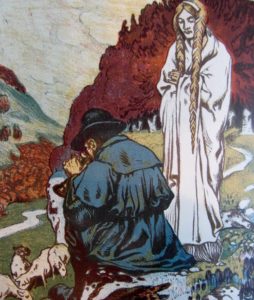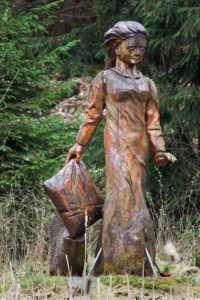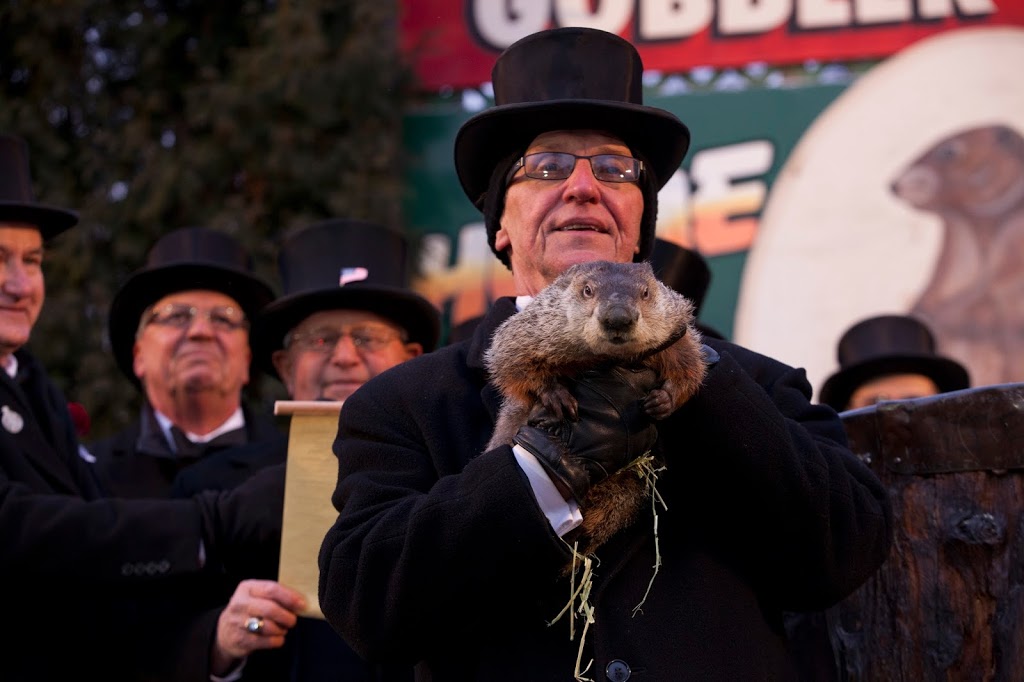Surprising Ways Groundhog’s Day is Really a Heathen Holiday (And You Thought it was Just a Movie)
Why do we care what rodents think and why is Punxsutawney Phil an obvious celebrity who can’t even beat a coin flip when it comes to predicting the weather? Well, I’ll tell you.
Weather Prognostication and Varmints
Unless you’ve been living under a rock, you know the drill. If the groundhog sees its shadow on February 2nd, we’ll have six more weeks of winter. If he doesn’t, we’ll have an early spring. The most famous groundhog, which has been around for about 130 years, is Punxsutawney Phil (who apparently can’t die, if you believe his caretakers, that is the Punxsutawney Groundhog Club Inner Circle). Phil is brought out from his cushy “den” in front of a crowd and the handlers pronounce the weather. Made famous by the movie, Groundhog’s Day, Punxsutawney Phil isn’t particularly good at forecasting the weather, being only 39 percent right during his entire 130 years.
Punsutawney Phil is a Pagan
I’m going t o go out on a limb and say that Punxsutawney Phil is a pagan. Or more accurately, he comes from pagan roots. The practice of looking at groundhogs and shadows comes directly from the Pennsylvanian Dutch who looked for badgers or bears to predict whether there would be more winter or if there would be an early spring. These settlers came from Germany and were greatly influenced by folk tales and customs which were handed down generations even after they became Christianized and settled in the United States. The Pennsylvanian Dutch had their own stories about the gods, their own magic and beliefs in magic, and their own customs.
o go out on a limb and say that Punxsutawney Phil is a pagan. Or more accurately, he comes from pagan roots. The practice of looking at groundhogs and shadows comes directly from the Pennsylvanian Dutch who looked for badgers or bears to predict whether there would be more winter or if there would be an early spring. These settlers came from Germany and were greatly influenced by folk tales and customs which were handed down generations even after they became Christianized and settled in the United States. The Pennsylvanian Dutch had their own stories about the gods, their own magic and beliefs in magic, and their own customs.
The observance of Grundsaudaag (Groundhog’s Day) and the twelve day festival  of Entschtanning in Braucherei (the magic system of the Pennsylvanian Dutch), the groundhog is an otherworldly messenger and may actually hail back to the squirrel, Ratatosk, who climbs along the World Tree to deliver insults from Nidhoggr and the eagle to each other. Historians have traced Groundhog’s Day to Candlemas, which in turn was the Catholic Church’s way of incorporating pagan rituals into Christianity. It may be a Germanic version of the Celtic Imbolc, which shares common elements with Groundhog’s Day, most notably celebrating the beginning of Spring.
of Entschtanning in Braucherei (the magic system of the Pennsylvanian Dutch), the groundhog is an otherworldly messenger and may actually hail back to the squirrel, Ratatosk, who climbs along the World Tree to deliver insults from Nidhoggr and the eagle to each other. Historians have traced Groundhog’s Day to Candlemas, which in turn was the Catholic Church’s way of incorporating pagan rituals into Christianity. It may be a Germanic version of the Celtic Imbolc, which shares common elements with Groundhog’s Day, most notably celebrating the beginning of Spring.
Urglaawe and Grundsaudaag
One branch of Heathenry, Urglaawe, is based on the Pennsylvanian Dutch folklore, legends, and myths. It’s actually quite refreshing to see a denomination of Heathenry that incorporates American traditions, albeit, traditions that originally came from southwest Germany. It’s also refreshing to see more prevalent goddesses in a branch of Heathenry. Urglaawe’s most prominent god is actually a goddess: Frau Holle. There are other interesting goddesses too such as Tyr’s wife, Zisa, and Weisskepicch Fraa, the White-Haired Lady.
 Grundsaudaag is the beginning of Entschtanning, which means “emergence.” This is the time when followers of Urglaawe begin their spring preparations. This includes spring cleaning and creating and honoring the Butzemann, who symbolizes the land’s guardian spirit. The Butzemann is like a scarecrow and is male because it is the energy of the growing plants which live in the Earth, which is considered female. There’s a nifty article on Huginn’s Heathen Hof about Groundhog’s Day and Urglaawe, if you’re interested.
Grundsaudaag is the beginning of Entschtanning, which means “emergence.” This is the time when followers of Urglaawe begin their spring preparations. This includes spring cleaning and creating and honoring the Butzemann, who symbolizes the land’s guardian spirit. The Butzemann is like a scarecrow and is male because it is the energy of the growing plants which live in the Earth, which is considered female. There’s a nifty article on Huginn’s Heathen Hof about Groundhog’s Day and Urglaawe, if you’re interested.



.jpg)

